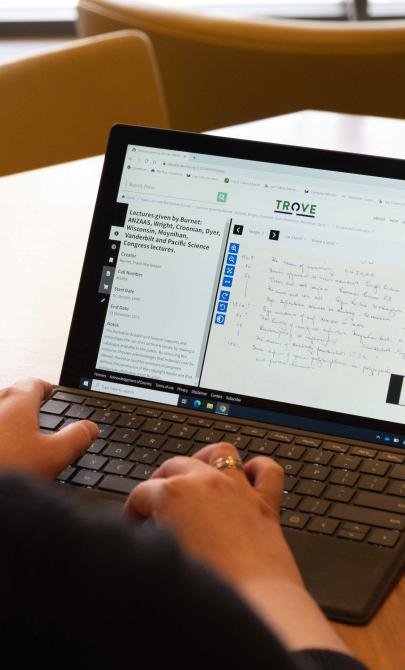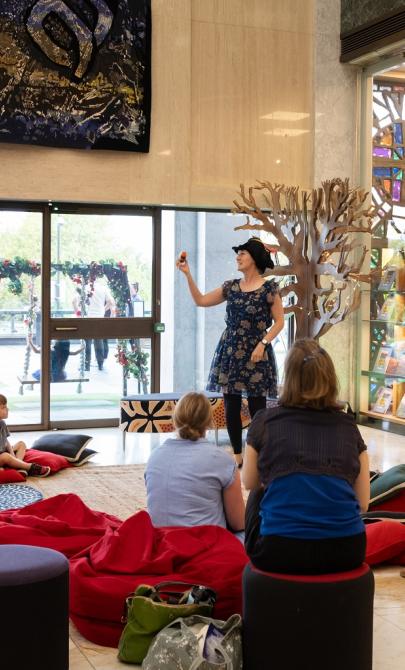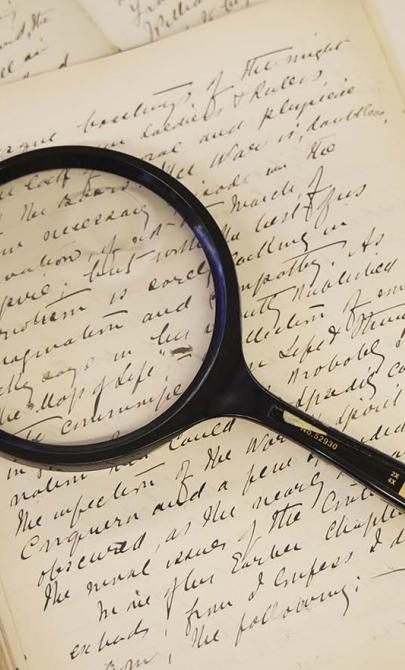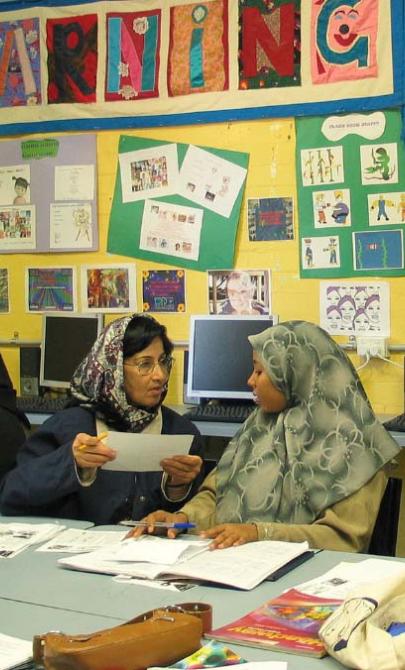Australian migration
About this module
Using an inquiry-based approach, this module develops students' skills as historians through engaging historical sources. Featuring sources from the National Library's collections, the resource caters for flexible approaches to suit diverse classroom contexts and learning styles.
Drawing on items that were part of the Library's Hopes and Fears: Australian Migration Stories exhibition, the resource engages students with a rich selection of migration sources and challenges them to draw their own conclusions about the development of Australia as a nation. This resource enables students to understand how they are interconnected with people and places across the globe.
Copyright for teachers
You can download all collection materials in this resource for education purposes. For more information, go to copyright for teachers.
Topics and learning activities
This module covers 5 key topics.
Each topic includes an introduction to key concepts, links to key resources in our collection and a series of learning activities that cater for a variety of classroom contexts and learning styles.
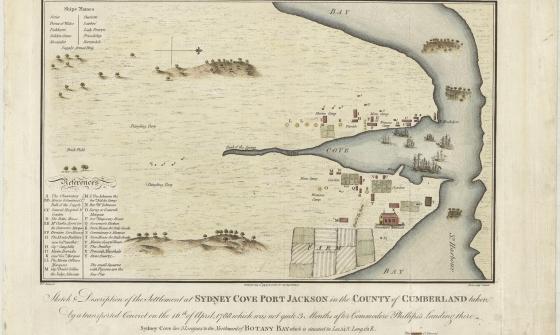
Francis Fowkes, Sydney Cove, Port Jackson, in the County of Cumberland, 1789, nla.gov.au/nla.obj-230578175
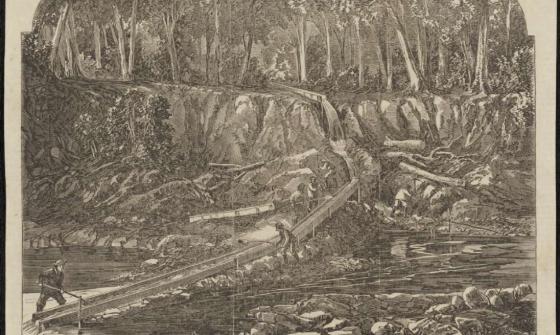
Nicholas Chevalier and Frederick Grosse, Chinese people ground-sluicing, near Beechworth, Victoria, 1867, nla.gov.au/nla.obj-135653408
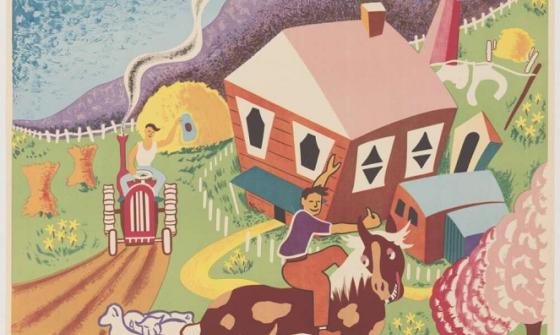
J. G & Australia. Department of Information, Australia land of tomorrow, 195- , nla.gov.au/nla.obj-137199963

Christening gown worn by members of the Kwong family from the Papers of the Kwong family, 1891-2001, nla.gov.au/nla.cat-vn3006822

Michael Jensen, Three girls in cabin on the boat from Vietnam, Darwin 1977, nla.gov.au/catalog/3209932
Introductory activities
Introductory and concluding activities are provided to focus students on the broad concepts explored in Year 6.
The National Library collects many different stories of migration through personal papers, maps, photographs, artworks and oral history. In the Australian Census conducted in 2021, more than half of Australians had at least one parent born overseas or were themselves born overseas. Coming from all parts of the globe, these migrants help make Australia one of the most diverse nations in the world.
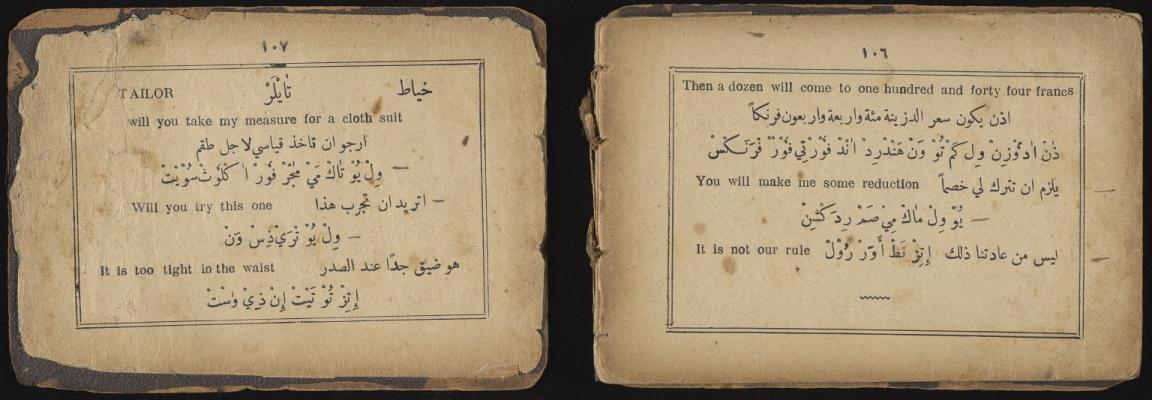
Australian Lebanese Historical Society, Records of the Australian Lebanese Historical Society, 1890-2015, nla.gov.au/catalog/6929220
Australian Lebanese Historical Society, Records of the Australian Lebanese Historical Society, 1890-2015, nla.gov.au/catalog/6929220
This English-to-Arabic Dictionary belonged to Anthony George Wehby who migrated to Australia in 1891 from Lebanon. Travelling with his dad, Anthony was only 13 years old when he first arrived in Australia. He would later marry, and open a general store in Braidwood, New South Wales. His son, Jack, would later fight for Australia in the Second World War.
Objects with meaning
Show the students the image of English-to-Arabic Dictionary without the caption. Use the following questions to interrogate the object:
- What languages can you see?
- Why would this object have two languages?
- Why might someone travel to Australia with this object?
Create a packing list
Thinking about Anthony’s journey to Australia, ask the students to create a packing list for a migration to faraway place. It could be a country or a place from a story. Let them know there is a chance they will stay there.
- What would they included to help them in a new and different place?
- What would you included to remember the home that you are leaving?
- What would be hard or impossible to take with you?
- What would you miss the most?
The story behind the object
After the lists are finished, ask the students to pick one object from their packing list. Imagine the object ends up in a library or museum years later. Ask the following questions to discussed as a class:
- How does their object tell a story of migration?
- What events could lead the objects to being collected?
- Why would the museum or library want these objects in their collection?
Concluding activities
These activities encourage students to connect stories of Australian migration to students’ own family histories where appropriate. As detailed in this resource, Australia has many different stories of migration.
Ask the students to focus on one person who has migrated to Australia. Students may have migrated to Australia themselves or be related to someone who has. If students do not have, or know of, an ancestor who travelled to Australia, they could focus on a family member who moved to live in a different Australian state. They could also choose someone from this resource, like Anthony George Wehby from the Introductory Activities.
Paths of migration
As a class, create a large world map as a wall display. Using tape and wool, students can mark the path a family member, ancestor or significant Australian used to travelled to Australia or within Australia. Different colour wool could be used to differentiate different centuries or modes of transportation.
Historian
Ask students to research their chosen traveller. They could interview a family member or use Trove or our Family History Research Guide for more.
Curator
As a class, create a migration exhibition based on students’ research. They can choose one object which represents their traveller. If they do not have an object or document which belongs to the person, they could create a replica based on their research. Ask the students to create an object label for the object.
‘A splendid citizen’
Anthony George Wehby owned a store in Braidwood, New South Wales, and was known for assisting the ‘town’s advancement and contributing liberally to all patriotic and charitable causes’. By the 1890s Lebanese people - or ‘Syrians’, as they were classified by colonial authorities — were migrating to Australia in small but increasing numbers. Some were well-educated and wealthy, looking for economic opportunities. They brought out family and fellow villagers to help build their networks and businesses.
Tarboosh worn by Anthony George Wehby when migrating to Australia 1890
Felt with tassel
Curriculum links
This resource aligns with the Australian Curriculum: Humanities and Social Sciences.
The resource also has relevance to the Civics and Citizenship strand, the English learning area and to the General Capabilities of Literacy, Critical and Creative Thinking, Intercultural Understanding, and Personal and Social Capability.
- changes in Australia's political system and to Australian citizenship after Federation and throughout the 20th century that impacted First Nations Australians, migrants, women and children (AC9HS6K02)
- the motivation of people migrating to Australia since Federation and throughout the 20th century, their stories and effects on Australian society, including migrants from the Asia region (AC9HS6K03)
- Australia’s connections with other countries and how these change people and places (AC9HS6K05)
- locate, collect and organise information and data from primary and secondary sources in a range of formats (AC9HS6S02)
